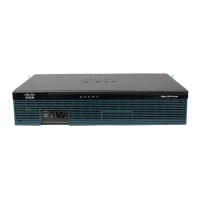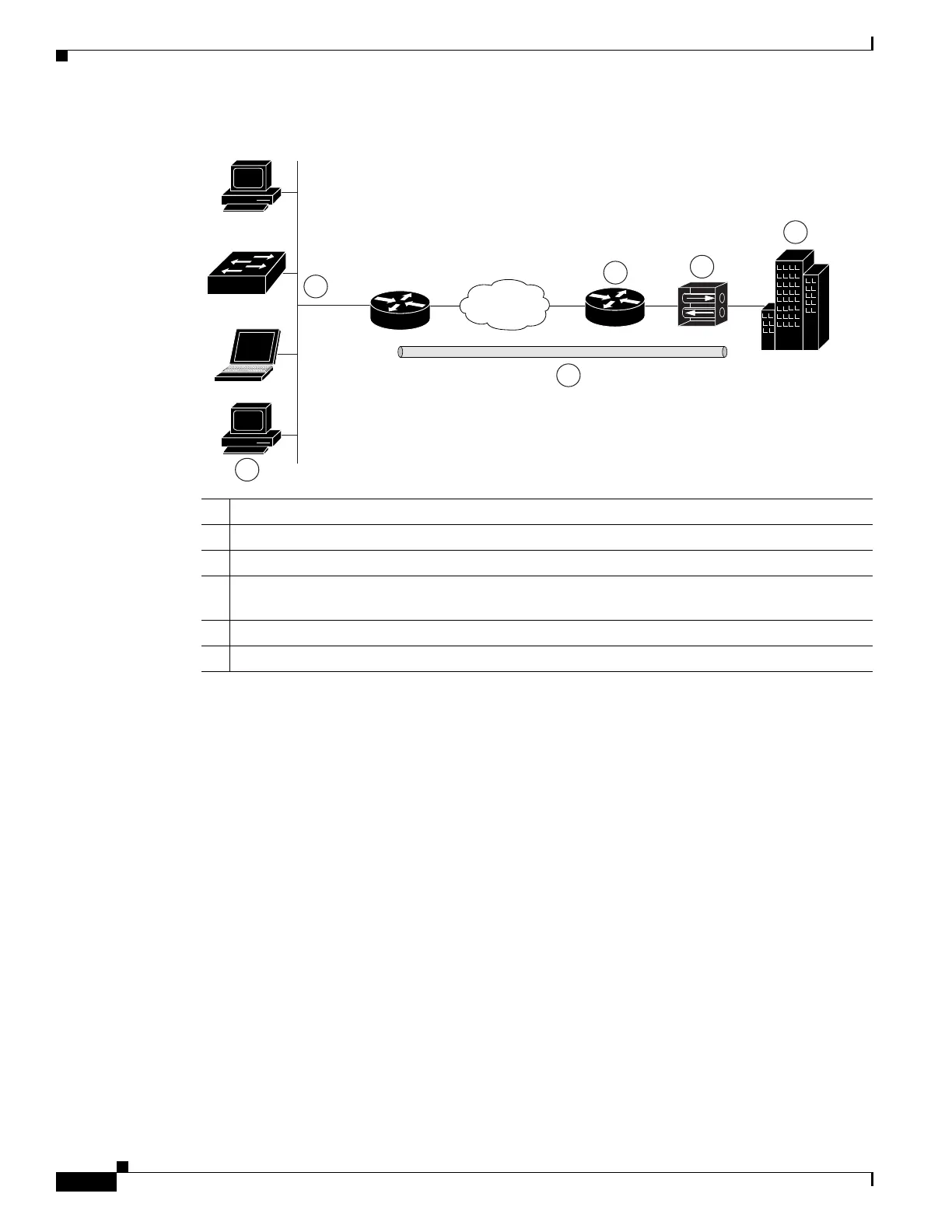132
Cisco 3900 Series, Cisco 2900 Series, and Cisco 1900 Series Integrated Services Routers Generation 2 Software Configuration Guide
Chapter Configuring Security Features
Configuring VPN
Figure 1 Remote Access VPN Using IPSec Tunnel
The Cisco Easy VPN client feature eliminates much of the tedious configuration work by implementing
the Cisco Unity Client protocol. This protocol allows most VPN parameters, such as internal IP
addresses, internal subnet masks, DHCP server addresses, Windows Internet Naming Service (WINS)
server addresses, and split-tunneling flags, to be defined at a VPN server, such as a Cisco VPN 3000
series concentrator that is acting as an IPSec server.
A Cisco Easy VPN server–enabled device can terminate VPN tunnels initiated by mobile and remote
workers who are running Cisco Easy VPN Remote software on PCs. Cisco Easy VPN server–enabled
devices allow remote routers to act as Cisco Easy VPN Remote nodes.
The Cisco Easy VPN client feature can be configured in one of two modes—client mode or network
extension mode. Client mode is the default configuration and allows only devices at the client site to
access resources at the central site. Resources at the client site are unavailable to the central site.
Network extension mode allows users at the central site (where the Cisco VPN 3000 series concentrator
is located) to access network resources on the client site.
After the IPSec server has been configured, a VPN connection can be created with minimal configuration
on an IPSec client. When the IPSec client initiates the VPN tunnel connection, the IPSec server pushes
the IPSec policies to the IPSec client and creates the corresponding VPN tunnel connection.
1 Remote networked users
2 VPN client—Cisco 3900 series, 2900 series, or 1900 series ISR
3 Router—Provides corporate office network access
4 VPN server—Easy VPN server; for example, a Cisco VPN 3000 concentrator with outside
interface address 210.110.101.1
5 Corporate office with a network address of 10.1.1.1
6 IPSec tunnel

